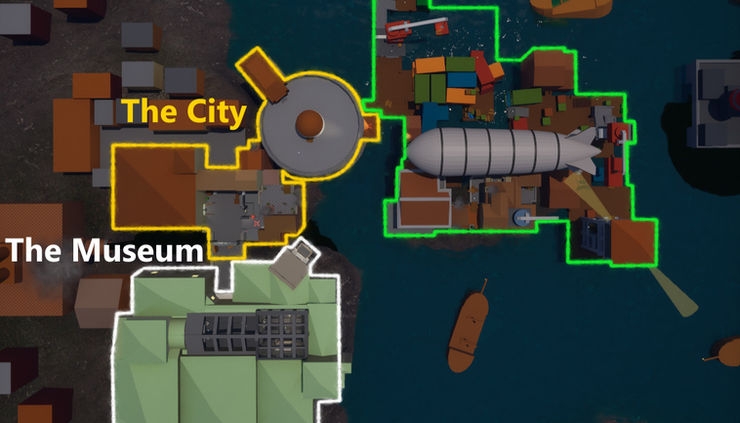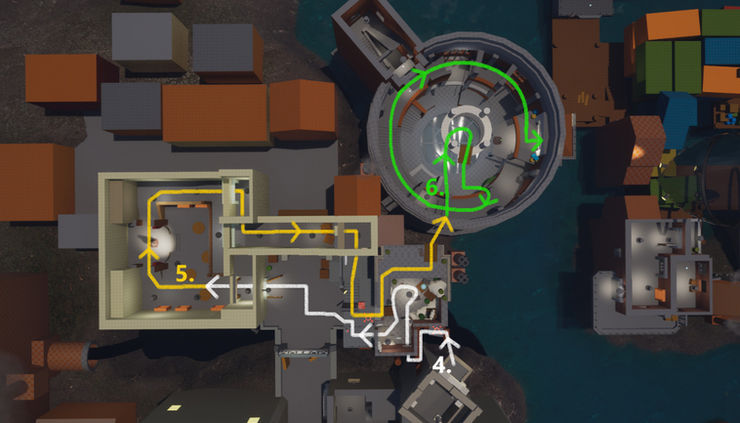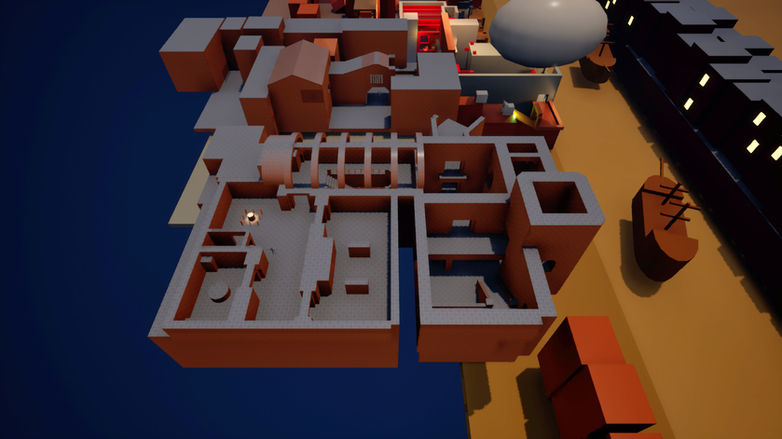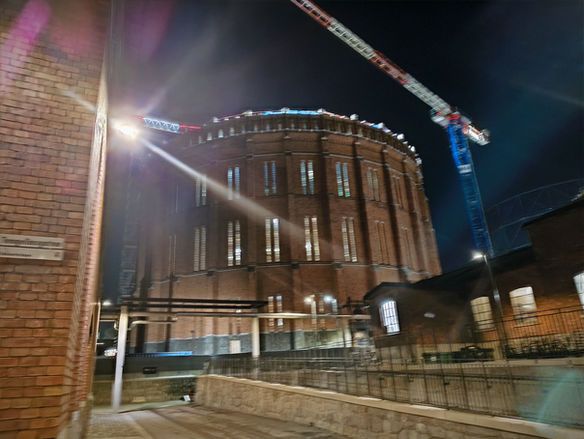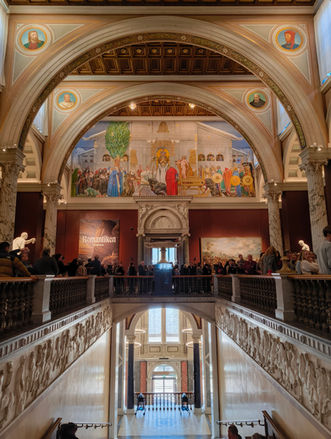

STOP THE THIEF!
First Person Retro Shooter
Introduction
Project Breakdown
You are on a quiet night shift, guarding the enchanted crown jewel in the grand museum. Suddenly, the alarm blares. Rushing back to the exhibit, you see a gang of thieves fleeing with the crown. With your trusty revolver & slow-motion ability, you must chase after them before they escape in their awaiting airship!
My goal was to create a holistic experience with well-designed mechanics, a story that fits the game's world and level design that naturally leads the player. All mechanics are introduced through set-pieces, which players can then utilize in high-paced combat arenas.
-
Solo Project made in 6 weeks at half speed
-
Focus on combat, level design, scripted events & world building
-
Blockout
-
Unreal 5.5
-
Blockout Tools
-
Blender 4.4
Engine
Plugins
Other
Playthrough with Commentary
Overview
Flowchart
The Museum

1.
Patrol

2.
Investigate Alarm

3.
Chase the Thieves
The City

4.
Enter the City

5.
Bar Fight

6.
The Gasworks
The Port

7.
Enter the Port

8.
Survive the Sniper

9.
Reach Thieves' Airship
Tension Graph
Tension
The Museum
The City
The Port
Patrol
Alarm Sounds
Investigate
Chase the Thieves
Enter City
Bar Fight
Gasworks Roof
Gasworks Fight
Enter Port
Survive the Sniper
Reach Thieves' Airship
Progression
Design Techniques

Pacing
The level maintains a fast pace by adhering to the 10-second rule in both combat and calmer sections. To prevent combat fatigue, varied combat areas are interspersed with calmer segments featuring puzzles and rewarding vistas. The design throughout the level also follow an hourglass design that controls the pace further.

Exploration
To maintain engagement, I combined hard, soft, and funnel reveal techniques. Detours with pickup rewards encourage exploration, while level loops expand player's mental map. Also including moment when the player gets call backs at where they've previously been helps.
Layout
The level's layout aims to guide players naturally using breadcrumbs, doorways, leading lines and affordances, along with clear short-, mid-, and long-term goals. This approach minimizes explicit instructions, and encouraged more intuitive navigation.
Surprises
I use bait-and-switch to surprise the player, for example, the player jumping to the port crane and going down the steps, only to realize that they need to jump on the crate that the crane is lifting. I also wanted to subvert the players expectations to surprise them. For example, entering a building through a vent leads to a walk-in freezer and the bar's stage goes dark as enemies ambush the player.
Design Choices
Here I will give context to the reasons behind some of my game and level design choices.
Game Design
Enemy Design:
The game features only two enemy types. The moving enemy has only a melee attack, while the ranged enemy is a stationary turret. This simplification helped manage the complexity of AI development and ensured a realistic scope for the project, while also making combat more readable for the player by clearly distinguishing the enemies types.
Ability Progression:
All three abilities are introduced with their own set pieces to teach the player how to use them. To maintain story logic, the player doesn't start with double jump and dash, as a security guard wouldn't initially possess these advanced skills. Due to time constraints, the player begins with the slow-mo ability, as there wasn't enough time to develop a pickup mechanism for it.
Combat Design:
The project focuses on creating a fast-paced, Doom-style shooter with a revolver and slow-motion ability. Initial playtesting showed that six shot magazine wasn't fun, so I added a larger bandolier magazine inspired by Hunt: Showdown. To justify a security guard having this weapon, the player acquires the larger magazine after defeating the first ranged enemy.
Level Design
Zones:
Originally the museum and port areas were small, and combat was planned for rooftops and alleys. Playtesting revealed these settings lacked a clear identity. Therefore I expanded the museum and port areas into three distinct zones, each with unique gameplay moments. I also added new indoor combat areas, to diversify encounters.
Flow and Scale:
The level layout features layered, winding pathways to create a dynamic flow to avoid the level feeling like a long corridor. The path includes large indoor spaces, courtyards, rooftops, small indoor areas, and a semi-open port to make each area distinct. The outdoor environments make the world feel expansive. The airship at the level's end serves as a landmark and a clear long-term goal for player orientation. It was also important to create contrast between the zones to intrigue and give a seance of progression.
Workflow
Pre-Production
I took inspiration from Doom's and Wolfenstein's gameplay and layouts, and Dishonored's aesthetics.
From a list of desired mechanics, design techniques, and blueprints, I created a paper design map on Miro.
Location Scouting
Before starting the blockout phase, I realized my Miro design lacked gameplay, flow and desired design techniques. The museum and port zones were too small, while the city was too large.
To address this, I visited Stockholm's National Museum, Old Town, and the 1800s gasworks factory in Hjorthagen. I drew inspiration from these places, which helped me balance the zone sizes, improved gameplay, flow, pacing, and storytelling.
Blockout & Playtesting
During the blockout phase, I made significant adjustments from the Miro version:
-
Museum: Expanded with a combat arena, level loop, cutscene, dramatic airship reveal and double jump on-board. The upper floor features paintings, while the lower floor has statues to distinguish them.
-
City: Added a slow-mo on-boarding set piece, replaced rooftop combat with a bar area and added a level loop. The bar segment includes a power fantasy moment and reworked the factory to a round gasworks building.
-
Port: Expanded the port's role, introduced the dash ability, and moved the sniper to an oil rig chimney for clearer gameplay flow.
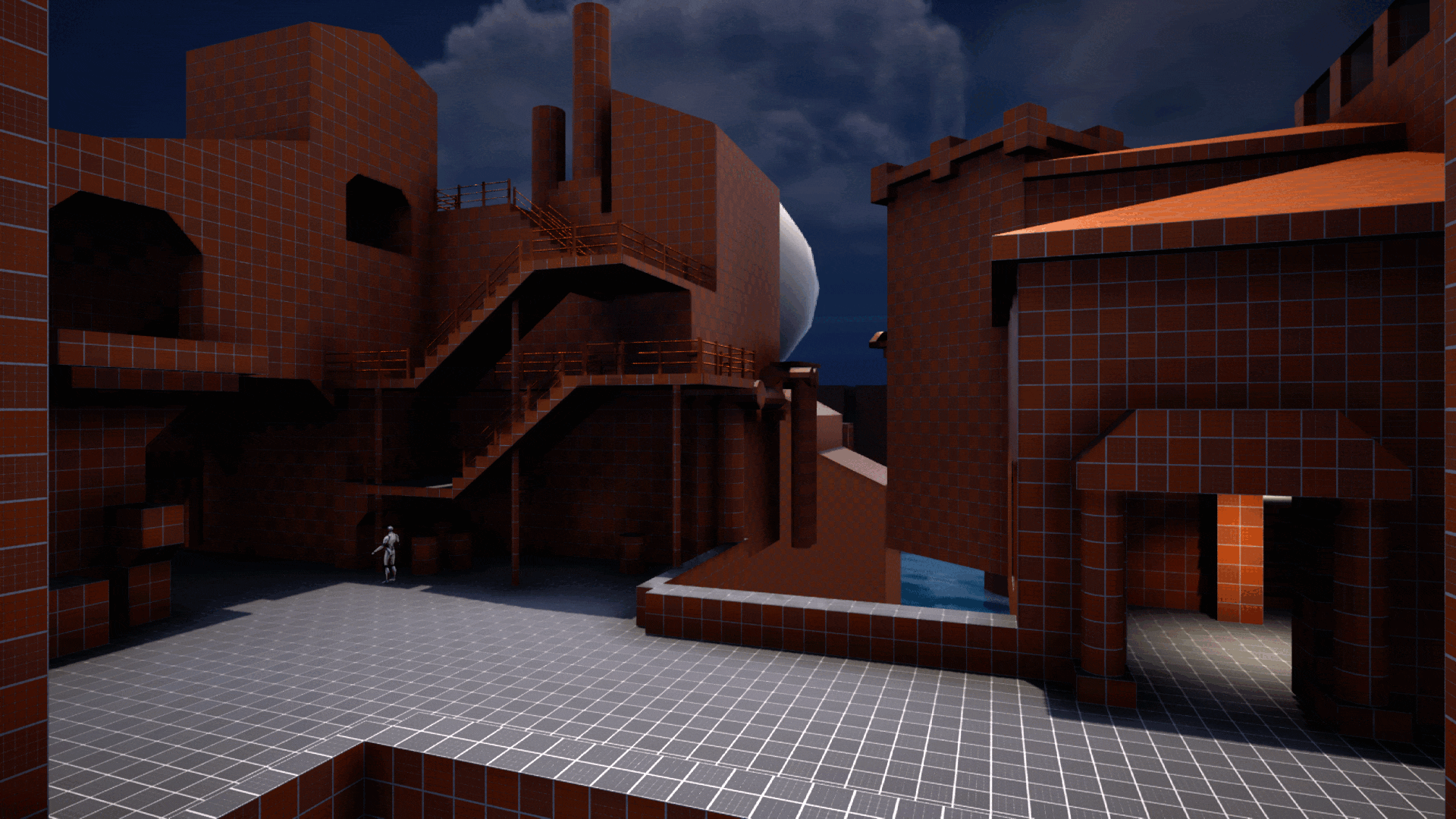
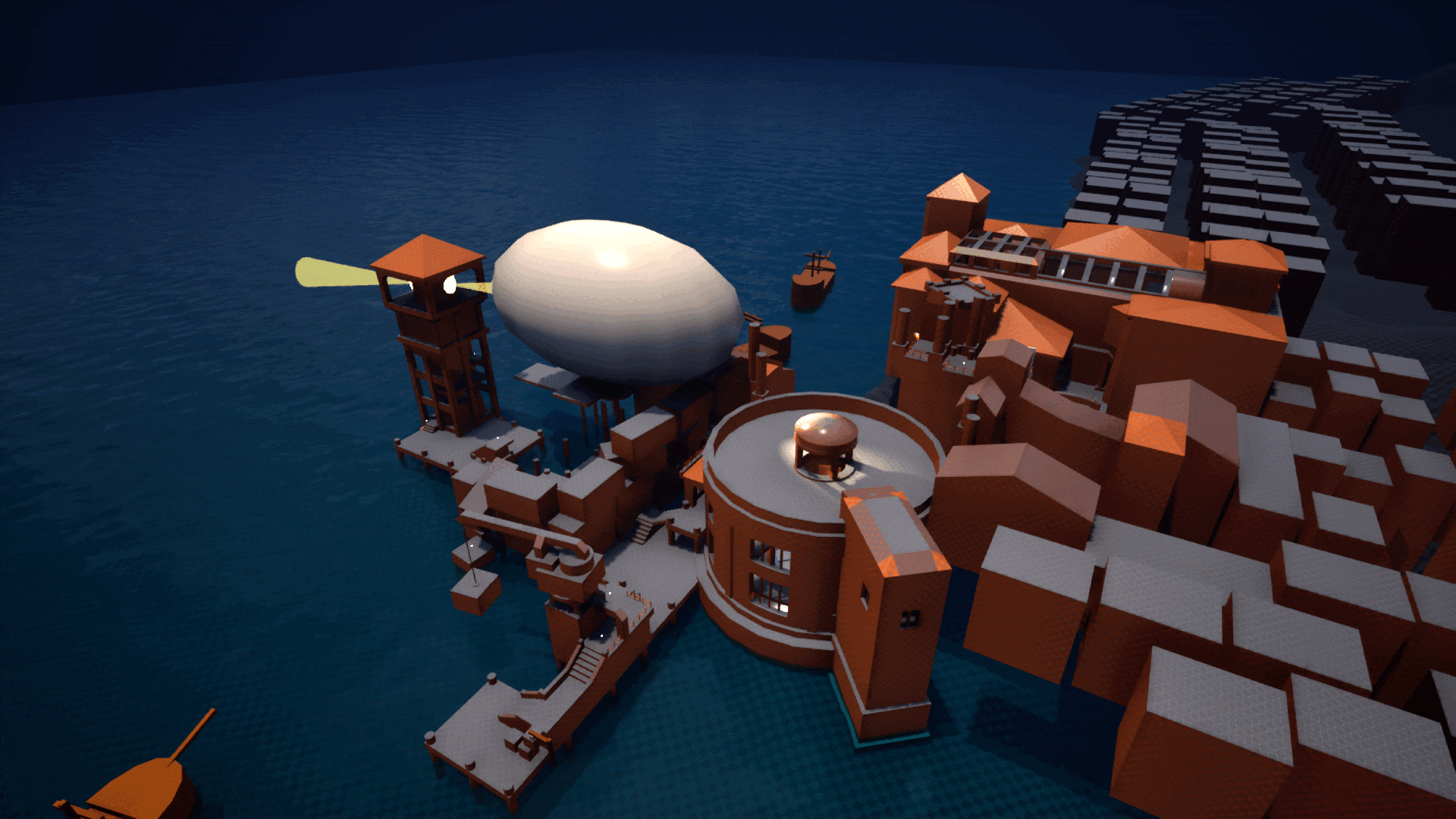
Reflections
Creating this project was both a gratifying and educational experience. It taught me a lot about combat and level design, flow, and how to integrate the world and story with the gameplay.
There are however aspects of the map I would change if given more time. For example, the way the bar leads the player to the button that lowers the staircase to the rooftop feels slightly illogical. I would instead probably lead the player out of the bar into a new house that has the button in it.
Additionally, in the port area, I don't challenge the player to use all of their abilities to the fullest or in combination with each other. This could have been improved by adding more enemies, moving platforms and hazardous objects, all while avoiding the sniper. I would also aim to highlight the function of the buildings in the port more clearly, showing that they are warehouses, fishing huts, merchant houses and observation towers, as these types of buildings would be in a port.
In the end, I am pleased with the results I achieved. I have learned a great deal and feel confident that, with the knowledge I've gained, I could significantly improve the level if given another opportunity.
Thank you for reading!
